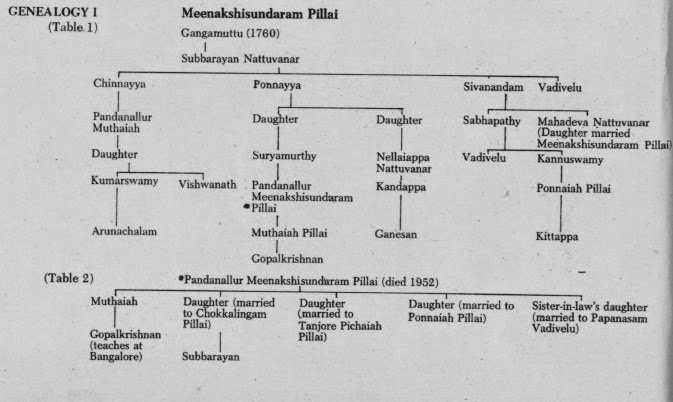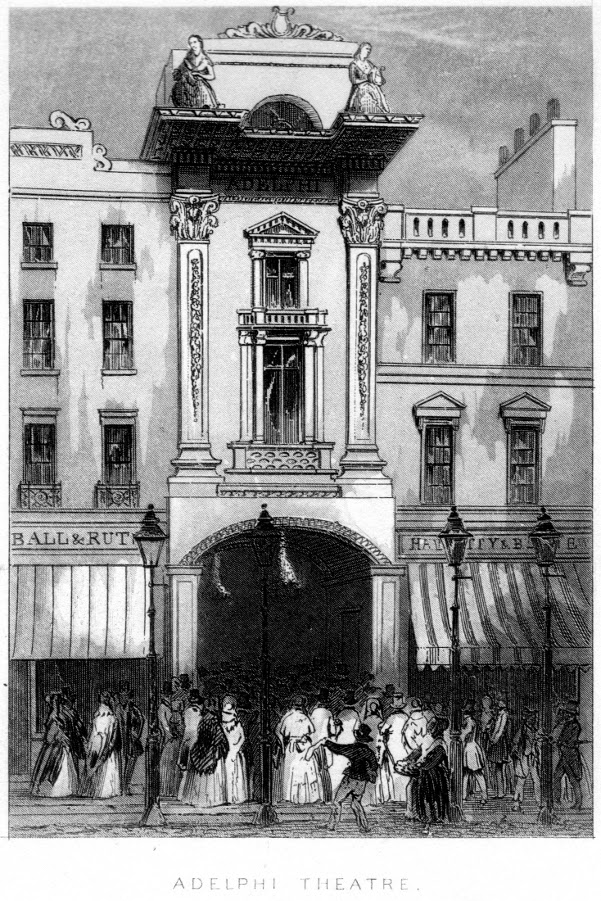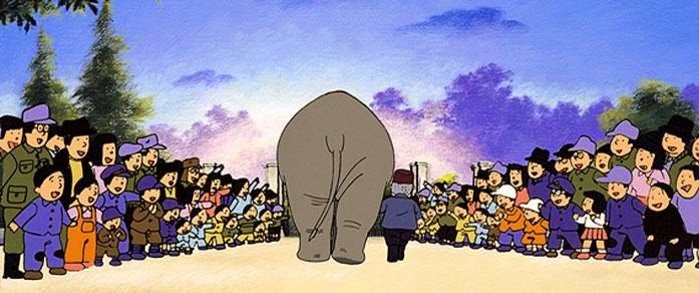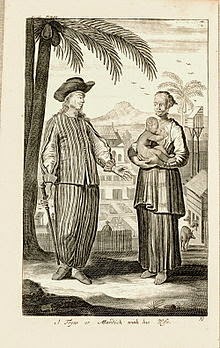Nairsan - An Indian in Manchuria, China and Japan
Many a hotel in Kerala serves chiggen manjuri (Chicken Manchurian) or Gobi manjuri (Cauliflower Manchurian) these days and you will see that it is relished with gusto by the finger slurping Malayali, wrapping it inside bits of Malabar Porotta. Of course Ayappan Pillai Madhavan Nair, the subject of our story was not the one who brought it to Kerala from Manchuria, for it was apparently conceived by one Nelson Wang of Calcutta (owner of China Garden Bombay) in 1975, using Indian spices.
![]()
So what has AM Nair got to do with Manchuria? Then again many won’t even know there was once a state called Manchuria, for it does not exist today. Some people may remember Nair as the Nairsan of Japan, purveyor of Indira curry powder and late owner of the Indian restaurant in the trendy Ginza area of Tokyo, but his exploits during the World War II are legendary, if not in public, at least in the intelligence circles where he was known as the Manchukuo Nair. So I will now go on to narrate to you some of the exploits of this interesting man from Neyyatinkara - Travancore, son of Aramuda Iyengar and Lakshmi Amma…
After schooling at Model school Trivandrum, and later the Srimmolavilasm School at Vanchiyoor, Nair was drawn into the vortex of the anti-British freedom movement in the 1920’s. He got into trouble leading student marches and was quickly listed as a trouble maker by the British. In order to get him out of troubles way, Nair’s well to do father decided to send him for Civil engineering studies in Japan, following the footsteps of his brother who had earlier completed a fisheries degree from the Sapparo University. Nair’s degree in engineering was to be done in Kyoto.
This was how he ended up meeting the wanted revolutionary Rash Behari Bose who had fled British India and settled down in Japan. A powerful Japanese extreme right nationalist leader Mitsuru Toyama had taken Bose under his wings and sheltered him in the house of the Soma’s. Soon their daughter was married off to Bose and Bose had taken on Japanese nationality. Bose was the first to lead the anti-British movement from Japan.
![]() |
| Rash Behari Bose |
Nair was always under British observation, but that petered off to an extent and he soon became fluent in Japanese and excelled in his studies to graduate in 1932. After this he plunged headlong into the anti-British movement, touring around Japan and giving speeches as well as writing for publications. During this period, he built up excellent contacts in the top circles of the Japanese bureaucracy and military, all of which was to stand him in good staid in the days to come.
Nair was initially planning to return to Kerala, but found out that the British were waiting or him to get back, to put him behind bars and this information from Kerala made him stay back in Japan. Back in India, Nair’s family acting on the advice of Sir CP declared AM Nair dead and divided up his remaining properties. This resulted in Nair, a person who had only Indian freedom foremost in his mind, living in Japan and concentrating his activities on the Indian freedom movement from this far away corner of the world.
A little Central Asian history has to be narrated to set the following scene. If you recall, there existed a 4,000 odd mile silk road many centuries back and it was on this road that camels and mules plied, laden with wool, silk, spice or whatever was needed along the route. The profitable venture took a turn for the worse when the Ottoman Turks became powerful and seized Constantinople or todays Istanbul, in 1453 and declared a trade embargo on the West. To get around it, a sea route was established by the Portuguese after Vasco da Gama successfully sailed around Africa to Calicut. Following this Magellan and others went around India to Chinese ports later. The seaborne Indian Ocean trade had become the new norm. The people who were most affected were the Muslim trading families on the land route in Central Asia and of course the Muslim traders dealing with Malabar ports. For now, we will confine ourselves to the Mongols on the silk route.
In Japan, population was increasing and expansionist tendencies were discussed. Korea was already under them. Now their eyes were on the state of Manchuria (Manzhou), with China on the south, Mongolia on the west, Russia in the north and Korea on the North east. In the late 14
thcentury, the Mings were in control of the territory, but in 1644 the Qing Manchus took control of Beijing. By 1858, it again changed hands and became Russian controlled. By 1904, the Japanese had taken over and exercised control over Inner or Southern Manchuria. Manchuria was noted for its abundant mineral and coal reserves, and its soil suited for soy and barley production. For pre–World War II Japan, Manchuria was therefore an essential source of raw materials and needed for Japan’s war cause. This inner Manzhou was otherwise known as Manchukou or Manchuria. China and Japan quibbled incessantly over the area and its administration.
![]()
Japan at that time was still smarting from how it got boxed into signing the naval treaty in 1921-22, though it had done so amidst intrigues and much wrangling. In 1931, Chinese expelled Japanese supported Korean workers from Manchukuo and a Japanese intelligence officer Nakumura was killed at Mukden. The Mukden bomb incident on the railway line followed, and the Japanese army blaming the Chinese and utilizing the situation, moved in and occupied Manchuria. Korea in those days was a Japanese colony and the infamous Japanese Kwantung army was based in Manchukou and controlling the place.
Manchuria had become Japanese territory by now, and Pu-yi of the Qing dynasty (the Qings who had previously defeated the Ming’s and taken control of China) was kept as the titular emperor. The imperialist tendencies of Japan were not popular and the rest of the world was watching these steps warily.
In China, the Xin Hai or Scarlet winter revolution had overthrown the Qing emperors and a republic was born. Sun Yat-Sen was elected president and the capital was moved from Nanjin to Beijing. Soon after this Yuan Shikai took over from Sun Yat-Sen. Anti-Manchu movements started and a new leader Mao Zedong was slowly becoming heard in the midst of the Bolshevik movement in Russia. In 1919, anti-Japanese protests took place in China. Mao in the meantime was heavily influenced by communism and soon became a member and officer. By 1923, he was elected to the party committee, taking up residence in Shanghai. When party leader Sun Yat-sen died in May 1925, he was succeeded by a rightist, Chiang Kai-shek, who initiated moves to marginalize the position of the Communists. Soon Mao and Chiang were to fight each other for supremacy.
In the meantime, the many thousand Japanese in Shanghai were starting to feel nervous about the Chinese intrigues and so the Japanese deputed a large number of troops, mainly from Manchuria, for their comfort. They fought the Chinese and ousted them out of Shanghai, in what was known as the Nanking massacre. In the melee an American aircraft painted with Chinese colors was shot down. The League of Nations got involved and appointed a commission under the Earl of Lytton to enquire.
The commission did its work and declared that the Kwantung army did have a hand in Manchurian aggression, but at the same time did not accept the status of Manchuria as a separate state outside the suzerainty of China. The furious Japanese pulled out of the League of Nations. Manchuria was critical for the Japanese, as a supplier of raw material and Japan had held Manchuria stable while there was chaos in the rest of China and had kept the Soviets at bay. Japan retaliated with an anti-Lytton movement and Nair was quickly involved in that and promulgated the Asia for Asians theme, raising the ire of the British, yet again. This was all in 1932-33 period.
This was when Nair decided to step into the Manchurian cauldron. In his own words, Nair says it was to help his class mate and friend Nagao set up the Manchukuo administration and to profess the Indian independence movement, but Manchukuo to me seemed an unlikely place to fight it singlehandedly, for there were hardly 20 Indian families in all, comprising Sindhi’s and a few Tamilian jewelers. Nair organized the Asian conference in Dairen with Mahendra Pratap in tow and later based himself in Hsinking and learnt a smattering of Mongolian, all financed by the South Manchurian railway. Nair had one other objective in mind, to sabotage British trade activity as much as he could, himself. Not directly under control of any Japanese officer or department, Nair was akin to a Japanese Ronin.
Now what is a Ronin? A Ronin was a samurai with no lord or master and was seen during the feudal period (1185–1868) of Japan. A samurai became master-less from the death or fall of his master, or after the loss of his master's favor or privilege. The samurai incidentally is like a medieval Malabar Nair, licensed to fight and kill.
![]() |
| Teh Wang |
Anti-British propaganda in Northern China and Inner Mongolia was the next target for Nair and this was planned amidst his administration set up and consultations with the emperor Pu-Yi. One thing Nair had noticed was the flourishing wool trade over the silk route, terminating in the Sea port of Tientsin which was under British Control. In fact caravans from southerly Tibet and North westerly Alashan were converging at Pao-tao before moving on to the sea port. Nair discovered that all the wool was later shipped to Manchester and Lancashire. Recalling Gandhi’s boycott of British goods, Nair decided to see if he could somehow stop or reduce the wool trade. An important link in this was the Mongol Prince Teh Wang (Demchugdongrub) based at Sunit and soon Nairsan befriended him and gave this simple local chieftain a class on the scenario going on. He also got him on the Japanese side, thereafter.
Upon receiving letters of introduction and assistance from Teh Wang, Nair travelled westwards for 4 weeks on camel-back to Ujino, and thence for Alashan in the Gobi desert. But it was not so easy and to pass off as a lay person, Nair donned the disguise of a religious Tibetan monk – a Lama Rimpoche. He had another reason for this, to avoid getting laid by the Mongol women (many of whom were STD carriers) who were highly desirous of getting a child fathered by a monk, but they would stay clear of a senior Rimpoche. And so, Nair went about his spy work, questioning traders and so on, trying to get the details of the wool trade, and managed not to get laid…
Much of the wool (Marco Polo mentioned it and even today you can get Alashan Cashmere) did originate at Alashan. To the west of Alashan is Lop Nur. From Alashan, Nair travelled back to Ujino and spent a few days there, playing Mahjong and doing not much else. His next plan was hazardous, for he wanted to travel westwards to Hami and Urumchi and think of going further southwards to Tibet. The Ujino king warned him against it, as there were bandits around, but Nair in his exploratory enthusiasm decided to plod on. He did reach Hami, but was soon waylaid by a gun toting Chinese bandit who relived him of what little money (50 coins) he had.
![]() |
| Inner Mongolia |
Nair’s Japanese friends in Manchukuo had by now (it had been a 6 month expedition) come to the conclusion that he was dead and completed his death rites and a snake party. When he turned up suddenly, Nair had a tough time convincing them that his heavily bearded unkempt lama façade was actually himself. Anyway he got back to Hsinking, safe and sound, and everybody celebrated his rebirth with gusto.
It was during this trip that Nair discovered the presence of many Chinese Muslim (Uighur?) tribal traders who controlled the wool trade. They would procure the wool and trade them on a barter system for grains (Wheat, millet), cotton cloth, chop-sticks, implements, tobacco and so on. The caravanserais were also owned by Chinese Muslims. Nair decided to head to Tokyo and apprise others about the situation in Manchukuo and Mongolia. But Japan was tense, with martial law virtually clamped over the city due to some rebellious acts. In any case, the government officials stated that he was free to pursue the matter on his own and that he would be provided with all support & finances for the plan. Nair convinced Japan to step in and buy all the wool at the marshaling location which was Pao-tao, but this was to be done only after he had convinced the traders to divert the supplies to the new buyers.
A check on this matter provided the following information from an Australian newspaper report which stated – Mongolia is the best wool growing land in Asia and Mongolia has been marked down as the home farm for the Tokyo mills.
So how did Nair fight what he called, his single handed economic war in 1936? Well to execute that part of the plan, he decided to don yet another disguise, this time as a mullah (Muslim religious priest) from India touring Mongolia. With the help of Colonel Kuo, a Muslim officer in the Kwantung army, the Mullah Nair now trained himself in perfecting Islamic rituals and did a crash course on the Koran. What further aided him was the fact that an abscess had necessitated a circumcision a couple of years back, in 1934. Now sure that he could pass off as a Muslim, Nair started the second part of his reconnaissance mission, in the guise of a Mullah, heavily bearded. They left in 1937 to Pao-tao and met the many traders involved. Together with Col Kuo, he helped form a Muslim wool merchants association and convinced them to sell the wool at the same price to the Japanese instead of the British. This was how the wool delivery from Mongolia to Tientsin got adversely affected by Nair’s intervention. Nair returned to Hsinking in 1938, by now marked up as an even more dangerous Indian in Japan, by the British. Known officially as a liaison man in Manchukuo, he was actually ranked equivalent to a Lt Colonel in the Japanese military - intelligence section.
Things were however not going too well in Manchukuo and Korea and there was a Russian invasion threat hanging in the air. As the Manchukuo army became heavy handed, the next task was to create a buffer zone between Manchukuo and Russia by penetrating the Mongol population on the Russian side of the border. Nair’s next task was to work with one of those leaders named Lee Kai-ten in assuring support for Japan, which he managed admirably. The boryaku or espionage school set up to train willing Koreans was headed by Lee and it had Nair as one of its ‘un-committed’ instructors.
![]() |
| Nair and Janaki |
It was in 1938 that Nair got married to Iku Asami, a Japanese girl from an aristocratic family. She was renamed Janaki Amma and again they went back to Manchukuo where Nair got involved in a newly started university for administration students, as a visiting professor. But things went steadily downhill as the army got mauled in a skirmish with the Soviets in 1939. Things were not going too well in the Chinese areas controlled by the Japanese and Nair took on a counter-intelligence trip to those places as well as to Peking (Beijing) and Nanking (Nanjing).
There he was involved with Eric Teichman, a British consular representative, who was intent on mapping a land route from China via Tibet to Delhi. In 1943 Teichman began his journey from Chongqing. Nair did try to delay or stop Teichman, by blowing up some gas stations on the way so as to halt or slow the trip, but was not successful in the end. After caravanning as far as Lanzhou, his truck continued along the outer Silk Road, across the Tarim basin, and over the Pamir Mountains to New Delhi.
Nair’s last task in Manchukuo was to infiltrate the white Russian community. He provides a very interesting explanation on how he handled Vodka drinking sessions with Russians, by first drinking an amount of olive oil to remain sober and to even outdrink a Russian. Nair completed this task as well, adroitly.
This article will not go on to explain AM Nair’s other exploits (For that I encourage you to read AM Nair’s autobiography), but I will surmise them quickly. After getting back to Tokyo, Nair finds the Japanese war machine in full swing and Rash Behari Bose ill, with little time in his hands. Nair takes to making radio broadcasts on the NHK. The WWII has started and Japan had marched into Singapore and Malaya. Upon Nair’s specific instructions, the larger Indian populace is spared of any Japanese brutality.
The Indian Independence league is formed and Nair is entrusted with organizing all kinds of activities. Shivaram becomes a friend, Mohan Singh does not and all kinds of issues are created by the sparring Indians in the independence fray. The INA is created and KP Keshava Menon takes Mohan Singh’s side. Behari Bose is too ill with TB and passes on the baton to NSC Bose who is drafted in from Germany where he has not had much success. The INA is integrated with the Japanese army and the army loses heavily in the U-Go campaign at Imphal – Kohima. In the INA there is large scale corruption and soon Behari Bose passes away. Keshava Menon is arrested in Singapore at NSC Bose’s behest, and Shivaram resigns from the IIL. Japan is routed in Burma and A-bombed in August 1945. It surrenders and MacArthur moves in by September to Tokyo.
Subash Chandra Bose vanishes, so also the vast amount of gold and silver as well as currency collected from the masses in the name of INA. Nair is not convinced and feels that Subash’s accomplices are to blame and that there is some hanky panky involved.
Nairsan became a manager of a PX department store for American servicemen after the war. Life went on, Nair is later involved in the 19521-52 treaty with Japan
which we talked about in my earlier article, and the independent Indian government has nothing to offer him in return for all the work he had done. However an Indian representative does sound him out - If he could help mediate with the Chinese - post 1962, after the war. Nair refuses. He was a Manchukuo Nair, but he will not be a China Nair, as he says……
Nair never got the recognition he deserved, and driven by his own convictions was always an Indian at heart. For all his services to India, he got no recognition… According to TP Sreenivasan who met him often, Nairsan expected to be appointed the first Indian ambassador to Japan, but the highest post he was offered was that of the consul general in Kobe. Later he decided to become an entrepreneur.
And that was how he got to starting the Nair restaurant eventually…. In the late nineteen sixties and early nineteen seventies, no Indian visitor could have missed the small Indian restaurant in Higashi Ginza in Tokyo, right across the Kabuki theatre. Nair continued to visit Trivandrum often, till his death in 1990, aged 85. His sons Gopalan and Vasudevan continue to live in Japan.
People ask me how Malayalees end up in the most obscure places and thrive. Well, if you read Nair’s exploits, you can see yet another of those from Kerala, driven by pure tenacity and conviction. An extraordinary man, who loved his land, who loved his people, but was perpetually exiled in another. Then again, he remained with his benefactors the Japanese, in their time of need, and remained true to them ever after.
No wonder the Japanese respected AM Nair.
Manchukuo does not exist anymore. On 8 August 1945, the Soviet Union declared war on Japan, and invaded Manchukuo from Outer Manchuria and Outer Mongolia. Emperor Pu-Yi abdicated and was captured by the Soviets and eventually extradited to China. From 1945 to 1948, Inner Manchuria served as a base area for the People's Liberation Army in the Chinese Civil War. Nowadays the name Manchuria is not used, for it is NE China.
The military in Manchukuo were terrible people actually and their acts, especially those of the unit 731 dealing with human experimentation is unbelievably horrible. It is possible that Nair knew about it and he does mention that the Kumantung army were not above reprieve. The Japanese army were also involved in untold brutalities in Shanghai and other SE Asian places which they conquered during or before the WWII. The Indian population in Malaya, Burma and Singapore may have escaped much of the brutality thanks to AM Nair.
The Pao-Tao wool association disintegrated when the Japanese army which starting to feel invincible when the WWII started, wised up and decided to only pay a fraction of what was originally agreed by them with Nair.
Not very many people even know who Rash Behari Bose is, but instead believe that Subash Chandra Bose was the one and only person behind the IIL and the INA. Many of his dealings and connections with the Japanese were mainly through AM Nair.
As I said before, Alashan wool is still popular.
Lop Nur became the site of Chinese nuclear tests, and how India got involved with that is a very interesting story. I will write about it soon.
Nair’s son runs the Nair restaurant. Indira Curry powder is still popular. To clarify, Behari Bose was one of the first made curries in his father in law’s restaurant/bakery, where he was in hiding.
Sivaram wrote a book ‘Road to Delhi’ where he talks well about AM Nair
Teichman completed his last road trip and flew back to England, where a few days later, at the age of 60, he was killed by an American GI and his pal, who were poaching on his estate. When Teichman confronted them, he was shot and killed.
Nothing is known about Lee kai-ten, perhaps he is in N Korea or dead by now. Mohan Singh did well, following Indian independence, he served as a Member of Parliament in the Rajya Sabha (Upper House) of the Indian Parliament. Mahendra Pratap returned to India in 1946 and faded into obscurity.
Malayalees will continue to love Chicken Manchurian, but the fact remains that many do not know Manchukuo Nair, the only Malaylee who lived for so many years in Manchuria. Perhaps that at least will change for the few who read this……
An Indian freedom fighter in Japan: memoirs – AM Nair
Subhas Chandra Bose: A Biography - Marshall J. Getz (Pg 137)
Words, Words, Words: Adventures in Diplomacy - Sreenivasan, T. P. (Pg 29)
The Road to Delhi - M. Sivaram
Pics - from the net - thanks and ack to original uploaders...
Wishing you all a happy and prosperous 2015

.jpg)


























































































